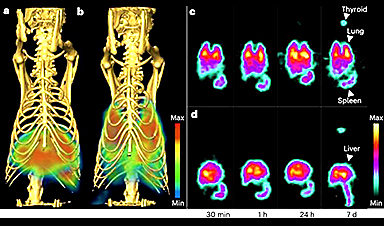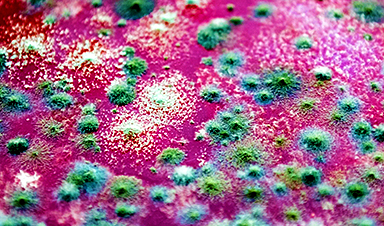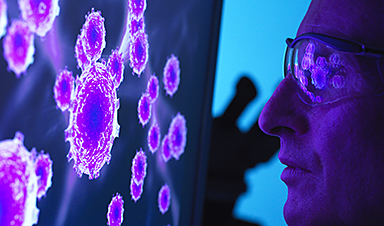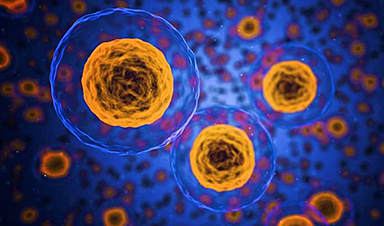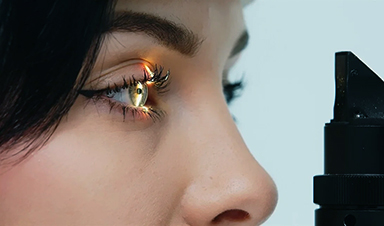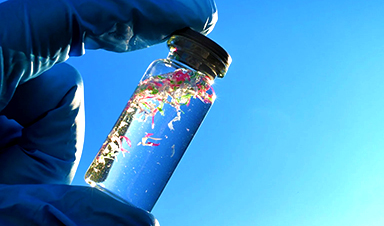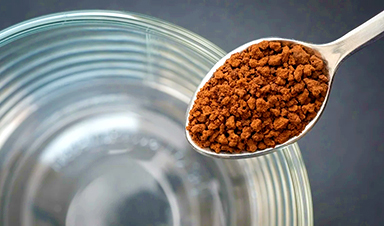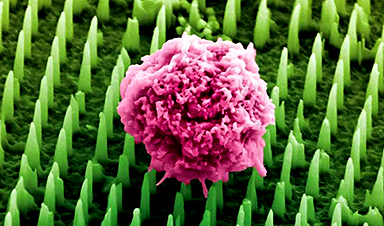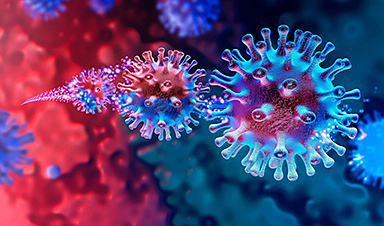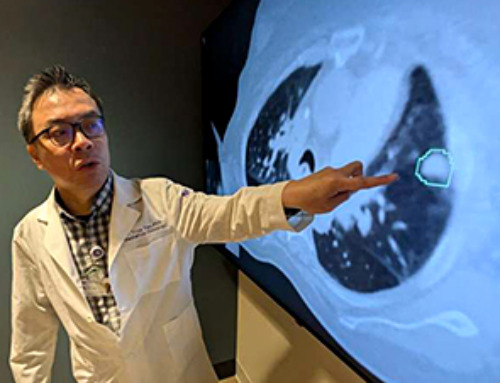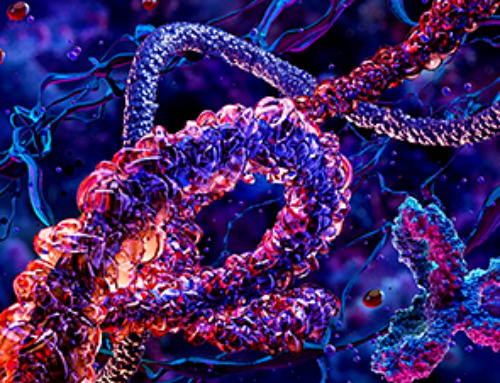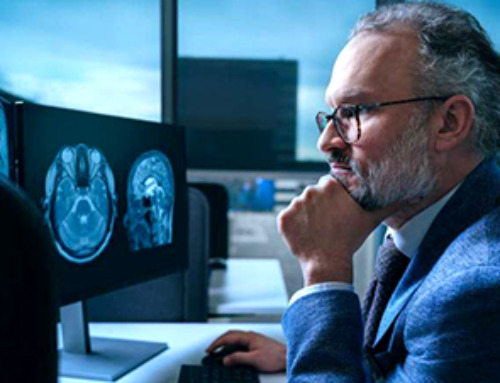In recent years, bio-medical engineers have been developing promising techniques that could help diagnose diseases or precisely target specific regions inside the human body. Among these promising therapeutic strategies are methods that rely on the use of nanoparticles (NPs), tiny particles between 1 and 100 nm in size.
These tiny particles could precisely image regions inside the body or deliver drugs to targeted locations. Despite the potential of NPs, for various reasons their therapeutic advantages have so far been limited.
The first main reason is that these tiny particles‘ size often limits their ability to enter and penetrate key tissues inside the body, rendering them ineffective for delivering drugs at the necessary concentrations. Moreover, when these particles are introduced into the human body, they are often rapidly captured by the reticuloendothelial system (RES), which is responsible for identifying foreign objects and eliminating them from the bloodstream.
Researchers at the Proteogenomics Research Institute for Systems Medicine recently set out to explore the potential of delivering NPs to lung tissue across cellular barriers, leveraging specialized structures known as the caveolae. Their paper, published in Nature Nanotechnology, demonstrates the feasibility of this approach in a series of initial experiments involving adult rats.
“NPs have tremendous yet unmet clinical potential to carry and deliver imaging and therapeutic agents systemically with tissue precision,” Tapas R. Nayak, Adrian Charastina and their colleagues wrote in their paper.
“But their size contributes to rapid scavenging by the reticuloendothelial system and poor penetration of key endothelial cell (EC) barriers, limiting target tissue uptake, safety and efficacy. We discover the ability of the EC caveolae pumping system to outpace scavenging and deliver NPs rapidly and specifically into the lungs.”
The researchers carried out various experiments where they tried to use metallic and dendritic NPs of different sizes to image and deliver drugs to the lungs of rats. To do this, they employed an alternative approach, which relies on the caveolae pumping system (CPS) to extract the particles from the body, as opposed to the RES.
Caveolae are small invaginations on the membrane of cells that can transport molecules across the endothelial cells lining blood vessels. The CPS is the process via which caveolae can transport these molecules to specific tissues, which the team leveraged as part of their study.
“Gold and dendritic NPs are conjugated to antibodies targeting caveolae of the lung microvascular endothelium,” wrote Nayak, Charastina and their colleagues. “SPECT-CT imaging and biodistribution analyses reveal that rat lungs extract most of the intravenous dose within minutes to achieve precision lung imaging and targeting with high lung concentrations exceeding peak blood levels.”
The initial findings are highly promising, as they found that their proposed method enabled the highly precise imaging of the rats’ lungs and the delivery of drugs to targeted lung tissues using NPs, without the issues typically associated with the expulsion of the particles. New studies could further explore the potential of delivering NPs to the lung by targeting the CPS while also shedding light on factors influencing the effectiveness of this approach, such as the size and shape of the particles used.
“These results reveal how much ECs can both limit and promote tissue penetration of NPs and the power and size-dependent limitations of the caveolae pumping system,” wrote Nayak, Charastina and their colleagues.
“This study provides a new retargeting paradigm for NPs to avoid reticuloendothelial system uptake and achieve rapid precision nanodelivery for future diagnostic and therapeutic applications.”
More information: Tapas R. Nayak et al, Rapid precision targeting of nanoparticles to lung via caveolae pumping system in endothelium, Nature Nanotechnology (2024). DOI: 10.1038/s41565-024-01786-z.
Journal information: Nature Nanotechnology
News
Johns Hopkins Researchers Uncover a New Way To Kill Cancer Cells
A new study reveals that blocking ribosomal RNA production rewires cancer cell behavior and could help treat genetically unstable tumors. Researchers at the Johns Hopkins Kimmel Cancer Center and the Department of Radiation Oncology and Molecular [...]
AI matches doctors in mapping lung tumors for radiation therapy
In radiation therapy, precision can save lives. Oncologists must carefully map the size and location of a tumor before delivering high-dose radiation to destroy cancer cells while sparing healthy tissue. But this process, called [...]
Scientists Finally “See” Key Protein That Controls Inflammation
Researchers used advanced microscopy to uncover important protein structures. For the first time, two important protein structures in the human body are being visualized, thanks in part to cutting-edge technology at the University of [...]
AI tool detects 9 types of dementia from a single brain scan
Mayo Clinic researchers have developed a new artificial intelligence (AI) tool that helps clinicians identify brain activity patterns linked to nine types of dementia, including Alzheimer's disease, using a single, widely available scan—a transformative [...]
Is plastic packaging putting more than just food on your plate?
New research reveals that common food packaging and utensils can shed microscopic plastics into our food, prompting urgent calls for stricter testing and updated regulations to protect public health. Beyond microplastics: The analysis intentionally [...]
Aging Spreads Through the Bloodstream
Summary: New research reveals that aging isn’t just a local cellular process—it can spread throughout the body via the bloodstream. A redox-sensitive protein called ReHMGB1, secreted by senescent cells, was found to trigger aging features [...]
AI and nanomedicine find rare biomarkers for prostrate cancer and atherosclerosis
Imagine a stadium packed with 75,000 fans, all wearing green and white jerseys—except one person in a solid green shirt. Finding that person would be tough. That's how hard it is for scientists to [...]
Are Pesticides Breeding the Next Pandemic? Experts Warn of Fungal Superbugs
Fungicides used in agriculture have been linked to an increase in resistance to antifungal drugs in both humans and animals. Fungal infections are on the rise, and two UC Davis infectious disease experts, Dr. George Thompson [...]
Scientists Crack the 500-Million-Year-Old Code That Controls Your Immune System
A collaborative team from Penn Medicine and Penn Engineering has uncovered the mathematical principles behind a 500-million-year-old protein network that determines whether foreign materials are recognized as friend or foe. How does your body [...]
Team discovers how tiny parts of cells stay organized, new insights for blocking cancer growth
A team of international researchers led by scientists at City of Hope provides the most thorough account yet of an elusive target for cancer treatment. Published in Science Advances, the study suggests a complex signaling [...]
Nanomaterials in Ophthalmology: A Review
Eye diseases are becoming more common. In 2020, over 250 million people had mild vision problems, and 295 million experienced moderate to severe ocular conditions. In response, researchers are turning to nanotechnology and nanomaterials—tools that are transforming [...]
Natural Plant Extract Removes up to 90% of Microplastics From Water
Researchers found that natural polymers derived from okra and fenugreek are highly effective at removing microplastics from water. The same sticky substances that make okra slimy and give fenugreek its gel-like texture could help [...]
Instant coffee may damage your eyes, genetic study finds
A new genetic study shows that just one extra cup of instant coffee a day could significantly increase your risk of developing dry AMD, shedding fresh light on how our daily beverage choices may [...]
Nanoneedle patch offers painless alternative to traditional cancer biopsies
A patch containing tens of millions of microscopic nanoneedles could soon replace traditional biopsies, scientists have found. The patch offers a painless and less invasive alternative for millions of patients worldwide who undergo biopsies [...]
Small antibodies provide broad protection against SARS coronaviruses
Scientists have discovered a unique class of small antibodies that are strongly protective against a wide range of SARS coronaviruses, including SARS-CoV-1 and numerous early and recent SARS-CoV-2 variants. The unique antibodies target an [...]
Controlling This One Molecule Could Halt Alzheimer’s in Its Tracks
New research identifies the immune molecule STING as a driver of brain damage in Alzheimer’s. A new approach to Alzheimer’s disease has led to an exciting discovery that could help stop the devastating cognitive decline [...]
